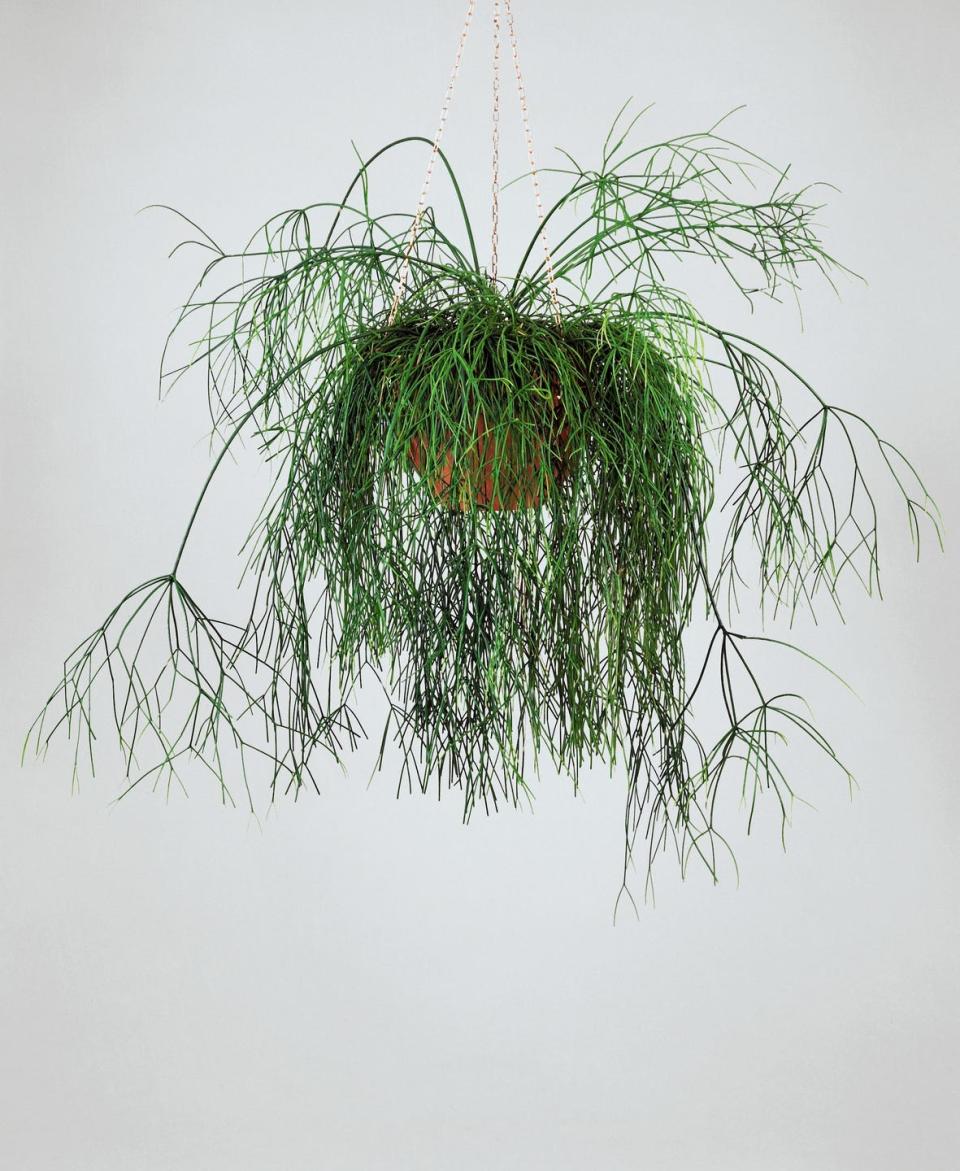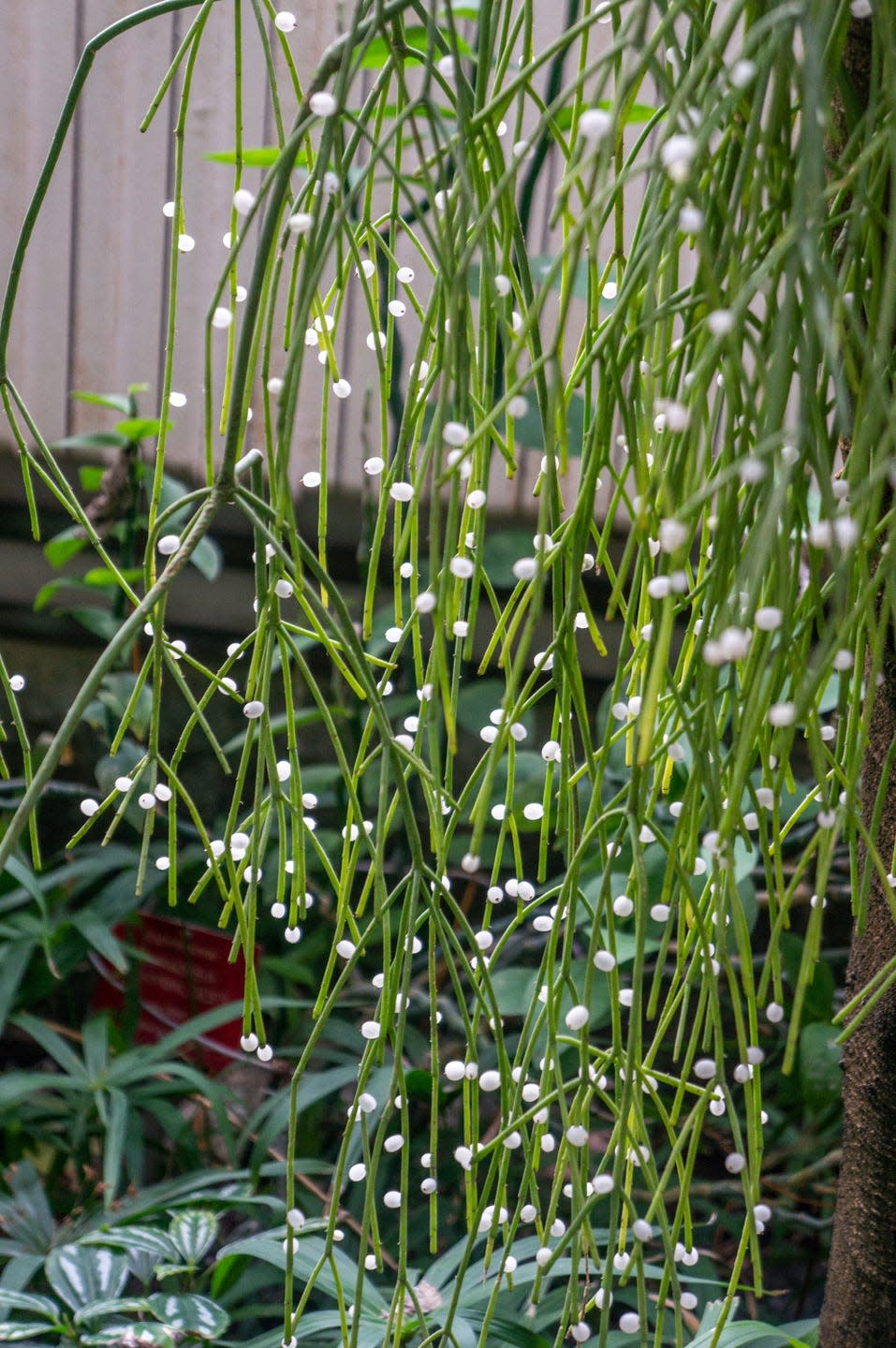Did you know cacti can grow on trees?

Did you know cacti can grow on trees? Rhipsalis, lepismium and pseudorhipsalis are prime examples and they all make ideal houseplants, says plant expert Tony Le-Britton.
'This is one of my favourite groups of plants and I have them hanging throughout my home,' reveals Tony of @notanotherjungle. 'They add a unique quality and their resilience means you can leave them until they dry out completely before watering and they need very little additional care. Mine grow happily even without being repotted for many years!'
In the second episode of Plants with Impact, we're putting a spotlight on rhipsalis baccifera (pronounced: rip-sal-is bak-i-fera), commonly known as the mistletoe cactus. This scene-stealing, tropical trailing plant is super easy to care for. And guess what? It can even grow berries! In the wild, rhipsalis is an epiphytic plant, which means it grows on the surface of a tree. Native of the jungles of Central and South America, this resilient plant is certainly unique in appearance. Rhipsalis has long, slender succulent stems (which is why you may also see it called spaghetti cactus) and it produces tiny white flowers followed by small mistletoe-like berries. It will happily cascade over the sides of a pot or hanging planter, making it quite the showstopper when styling it in your home.
Discover how to care for your mistletoe cactus and two easy ways to propagate in the video above

Light
• Mistletoe cactus does best in bright, indirect light but a burst of early morning or late afternoon sun will help them flourish.
Watering
• Water only when bone dry.
• Don’t allow it to sit in water. Give it a good soak but make sure the water drains off.
'I water my tree cacti really thoroughly,' says Tony. 'In fact, I take these outside and I hose the entire thing down. If you can't do that, just pop them in the shower, give the leaves a really good soak and soak through the soil to make sure you're allowing it to drain off.'
Feeding
• Fertilise every other watering throughout the year.
How to propagate
'This family of plants has a pretty ingenious way of spreading,' says Tony. 'After flowering, they produce berries that are full of black seeds and is surrounded by a sticky mucus.'

To propagate, there are two methods you can try:
Method one: Press open a berry to release the seeds; wipe the seeds on a piece of cork bark; place the bark in an airtight container with a little water then close to keep it humid. The seeds will germinate and roots will attach to the bark. Once leaves appear and reach a few inches long, take the plants off the bark to pot up in soil or leave to cover the bark. You can then hang the bark and spray it a few times a week to keep the plant moist.
Method two: Break off a piece of the plant that has a node, lay it on damp soil; cover with clingfilm or pop it into an airtight container. Within a few weeks it will root and give you a beautiful new plant.
Follow House Beautiful on TikTok and Instagram.
You Might Also Like



